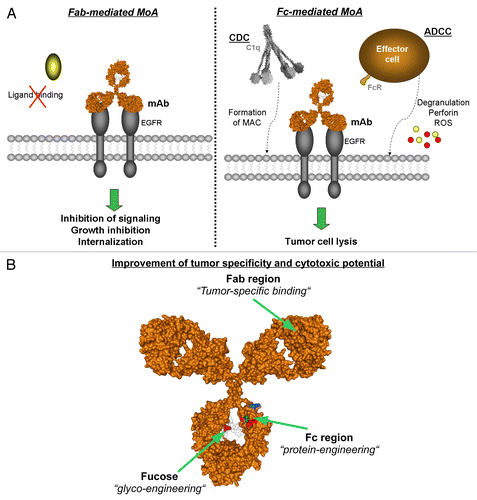Figures & data
Figure 1. EGFR expression levels affect the mode of action of EGFR-targeting monoclonal antibodies. (A) Modes of action of EGFR-targeting antibodies in tumor therapy. Epidermal growth factor receptor (EGFR) targeting monoclonal antibodies are able to elicit distinct effector mechanisms leading to tumor cell destruction. Fab-mediated effects (left panel) include the inhibition of ligand binding, and hence of proliferation, the induction of apoptosis as well as EGFR internalization. Fc-mediated mechanisms (right panel) are triggered as the Fc region binds either the complement component C1q to induce complement-dependent cytotoxicity (CDC), or Fc receptors on effector cells to trigger antibody-dependent cell-mediated cytotoxicity (ADCC). (B) Structural model of human IgG1. Amino acid substitutions and fucose residues in heavy chains are highlighted. Image generated with the 3D-molecule viewer package of NTI Vector (Life Technologies). MAC, membrane attack complex. Pdb file from Clark, MR, Chem Immunol 1997; 65:88–110.
